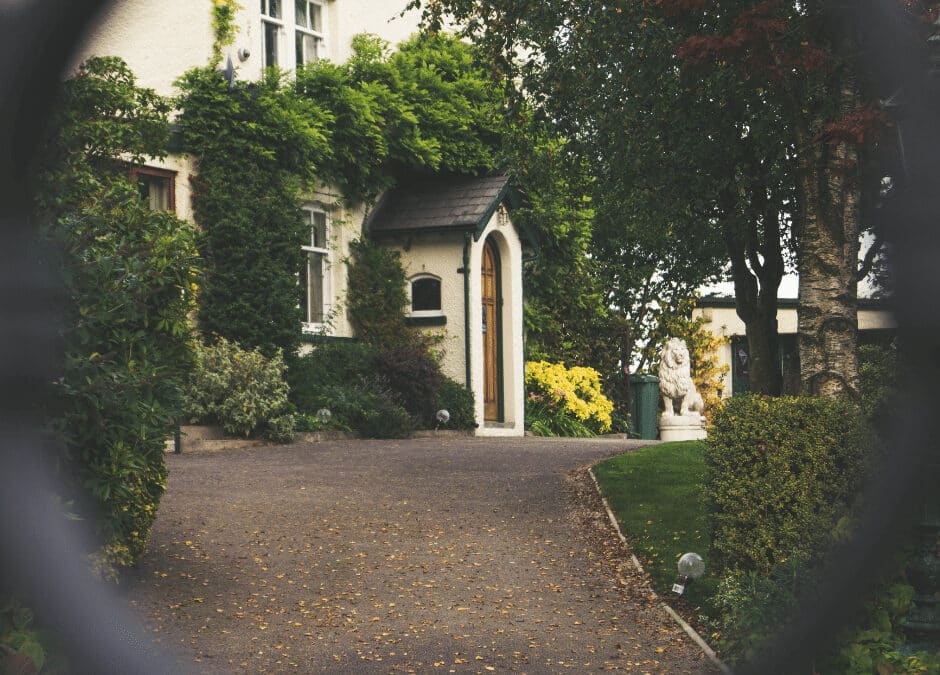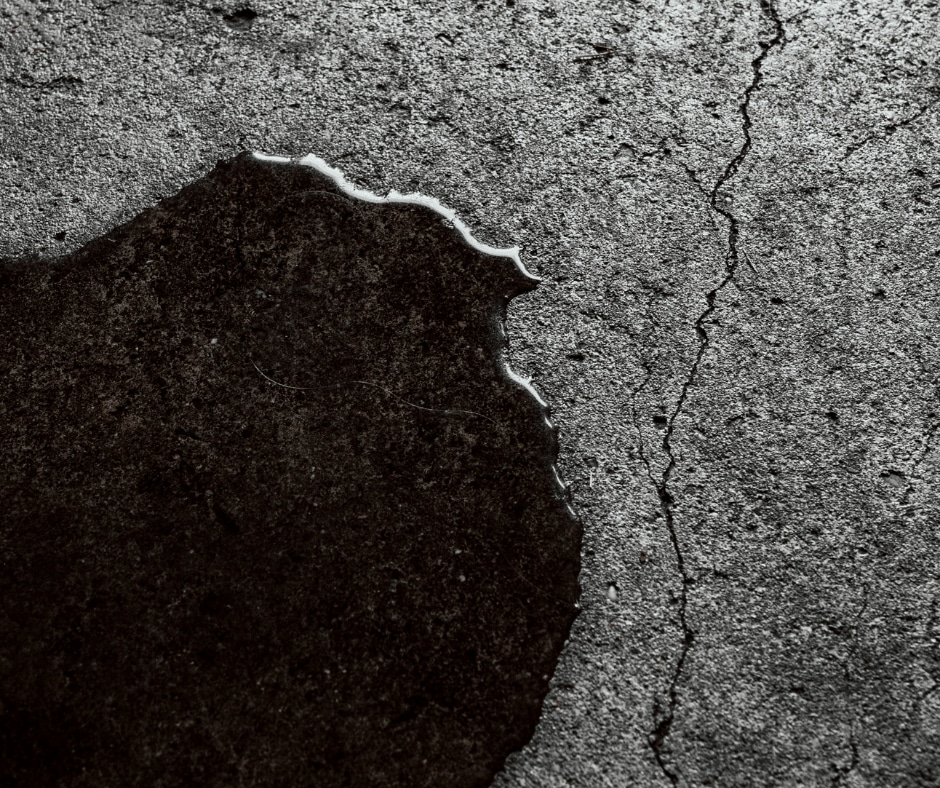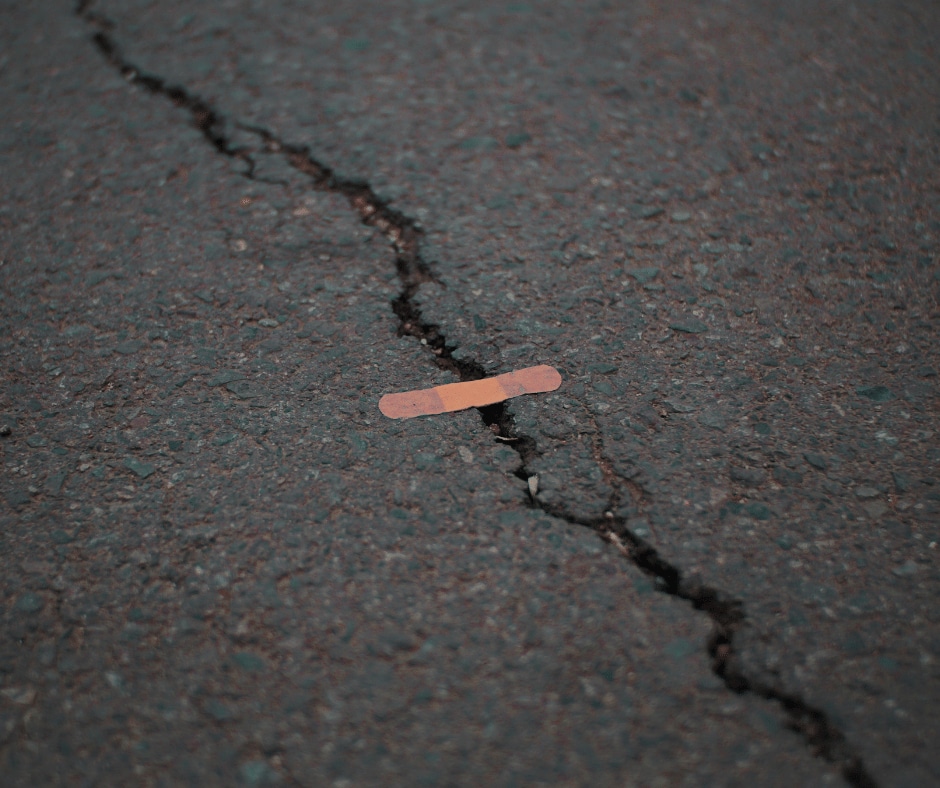You know the saying – “If your house is the face, your driveway is the hair; and if the driveway is anything but immaculate, you’re wearing a toupee.” Two truths: the saying is fabricated, and we have nothing against toupees. All the same, your driveway is your home’s calling card. We don’t have to obsess over it and go full-on, Patrick Bateman, when comparing our driveways to our friends’ and neighbors’, but it’s being aesthetically appealing does say a lot about our homes and us. If the exterior of your house matters to you, your driveway appearance and functionality should matter too. Now, let’s take a look at the five signs it’s time to replace your driveway. Take the next left, drive up.
You crack me up
It all starts with a tiny single crack. Spotting it could even feel endearing, as your driveway aging reminds you of its rich history, the people it has welcomed, and the tired nights when it showed you the way to your bed. We always support a poetic approach, and unconditionally at that. Still, your cracks are, in all seriousness, trying to warn you that “winter is coming,” and you should probably do something about it. A recipe for disaster – you’ve got sub-zero temperatures, freezing, thawing, rain, snow. You throw a little salt here and there, spill some gasoline, and the cracks absorb all of it. Water gets into the cracks, it freezes and then expands, forcing the cracks to deepen and cause significant damage to your driveway. Knowing why concrete cracks is one thing – but knowing when and how to repair them is what counts. Don’t stall it – small cracks are DIY material, big ones aren’t.
My Pothole-ogies
If a crack is a bee, then potholes are swarm queens. Cracks set the scene for potholes; with their help, moisture seeps into the ground that carries the road on its shoulders. As the road structure begins to tire and wear out, the weight and the pressure of the vehicle above it cause it to tear, leaving your driveway with potential potholes. Now, winters are notorious for throwing potholes at a buffet. And salt is the main course. We use salt to prevent the water from freezing or thawing the accumulated ice; yet, by doing so, we produce even more water – and if there’s a crack or two, there will be unpleasant surprises come spring.
You’re draining me
Slopes are for skiing, not your driveway. If you have followed the golden rule at the time of your driveway installation, you know that the slope should be a maximum of 10% for residential driveways. It shouldn’t rise more than 15 feet over a distance of 100 feet. Drainage systems are essential for keeping your driveway dry and running. Caused by potential unevenness, the retention of fluids speeds up its demise via cracks and all the natural processes of water expansion.
Flat is not good, either
Having a flat driveway could lead to headaches, too. The middle of the driveway should be elevated so the water can run wild and free off the sides. If you’re witnessing pooling spots and water running down the middle, you could be in trouble, as they suggest sinking and weakening of your driveway areas. Now, inlets and curbing could aid in channeling a portion of the water flow, but if the damage is unsalvageable, you should reconsider getting your driveway replaced.
Weeds
Although we love dandelions, sadly, they are one of the signs that it’s high time to replace your driveway. Why? Well, it’s perfectly normal to have a well-groomed garden on your property, but having grass and weeds grow out of your driveway cracks is not a sign of good health. It means that the foundation is not compact, as it also indicates that the material has been damaged and has severely aged. If there is room for flora to stem from the dark night of the crack’s soul, there’s also a need to mend it. According to moving experts who know a thing or two about everything that needs to be done prior to your relocation, AmeriSafe Moving Services and moving companies of the same caliber suggest that, before moving into your new home, driveway evaluation should not be overlooked, as it can bear hidden costs down the line.
You old friend
Everybody and everything ages; your driveway is not exempt from getting old and shabby, as inanimate objects can wrinkle up and stop being eye candy, too. The color fades. And that’s a sign to look out for. Your driveway is exposed to extreme weather conditions – from snowstorms to scorching sun glaring down its body. It’s true that driveways can’t get melanoma, but UV rays cause harm to some of the most durable materials this planet has mothered. Keeping regular maintenance of your driveway could extend its lifespan. Concrete and asphalt driveways require resealing application every 2-3 years to prevent the crumbling of the material and cracking.
Materials
If your driveway repair fails to bear fruit, it’s time to consider the materials at your disposal. You can opt for old-school picks (although not that eco-friendly) such as asphalt (20-year lifespan) and concrete (up to 30 years). But, modern materials and techniques are much more durable and reliable than the ones used decades ago. Try reinforced grass paving, block and stone paver driveways, flags and stabs, resin-bound gravel, permeable tarmac, and even porcelain. Your options are endless, so working out a budget for your driveway will give you a closer idea of what kind of material you should be looking for.
Maybe it’s time
If you have ticked some (or all) of the boxes from our “5 signs it’s time to replace your driveway” list, then you know what needs to be done. Repair comes first – replacement comes second. Having a professional help you with repairs (as you probably won’t be pouring the new concrete all by yourself – if so, kudos!) is a reasonable step if you want to give your driveway a chance for some extra quality time.





Recent Comments